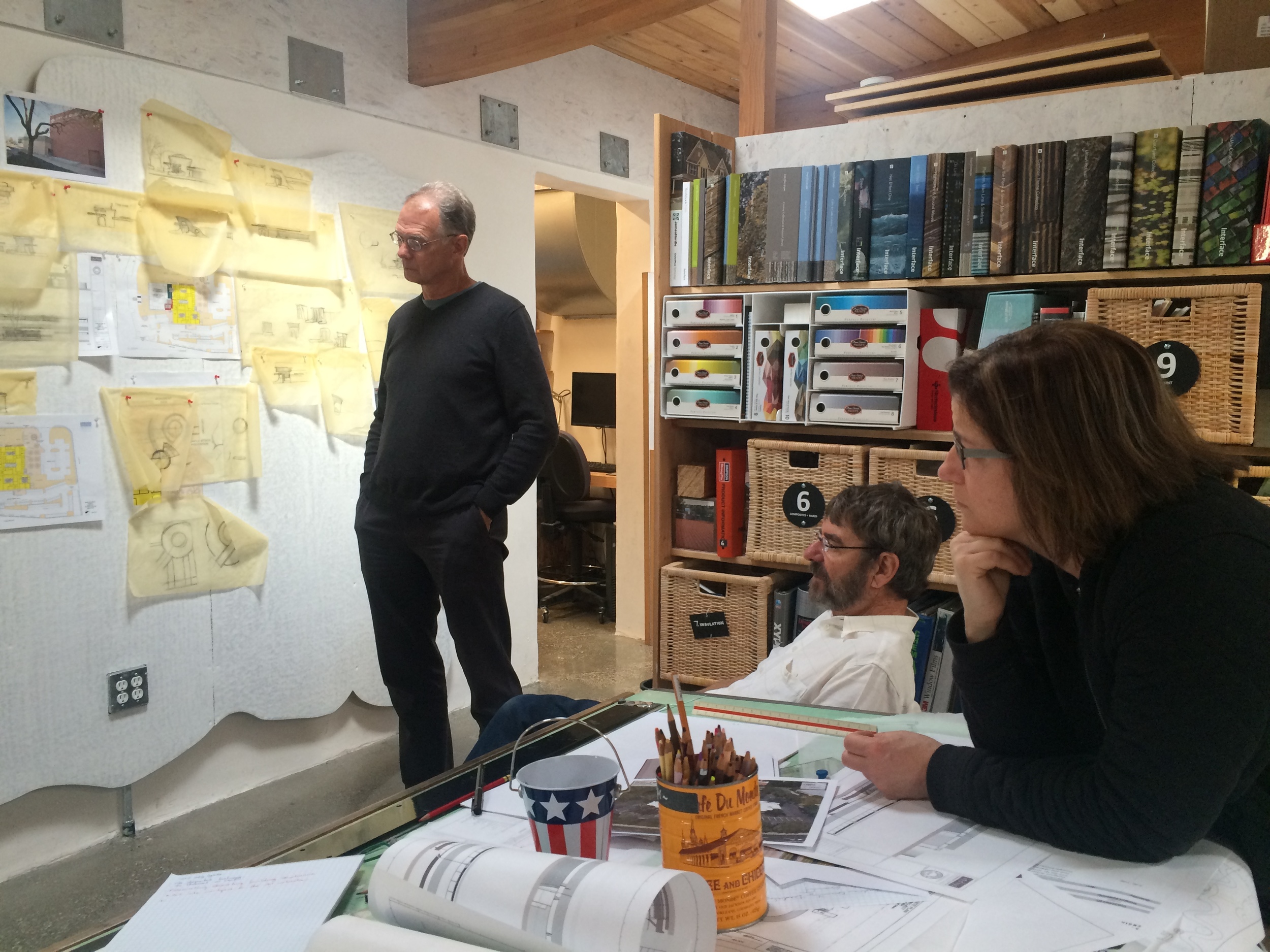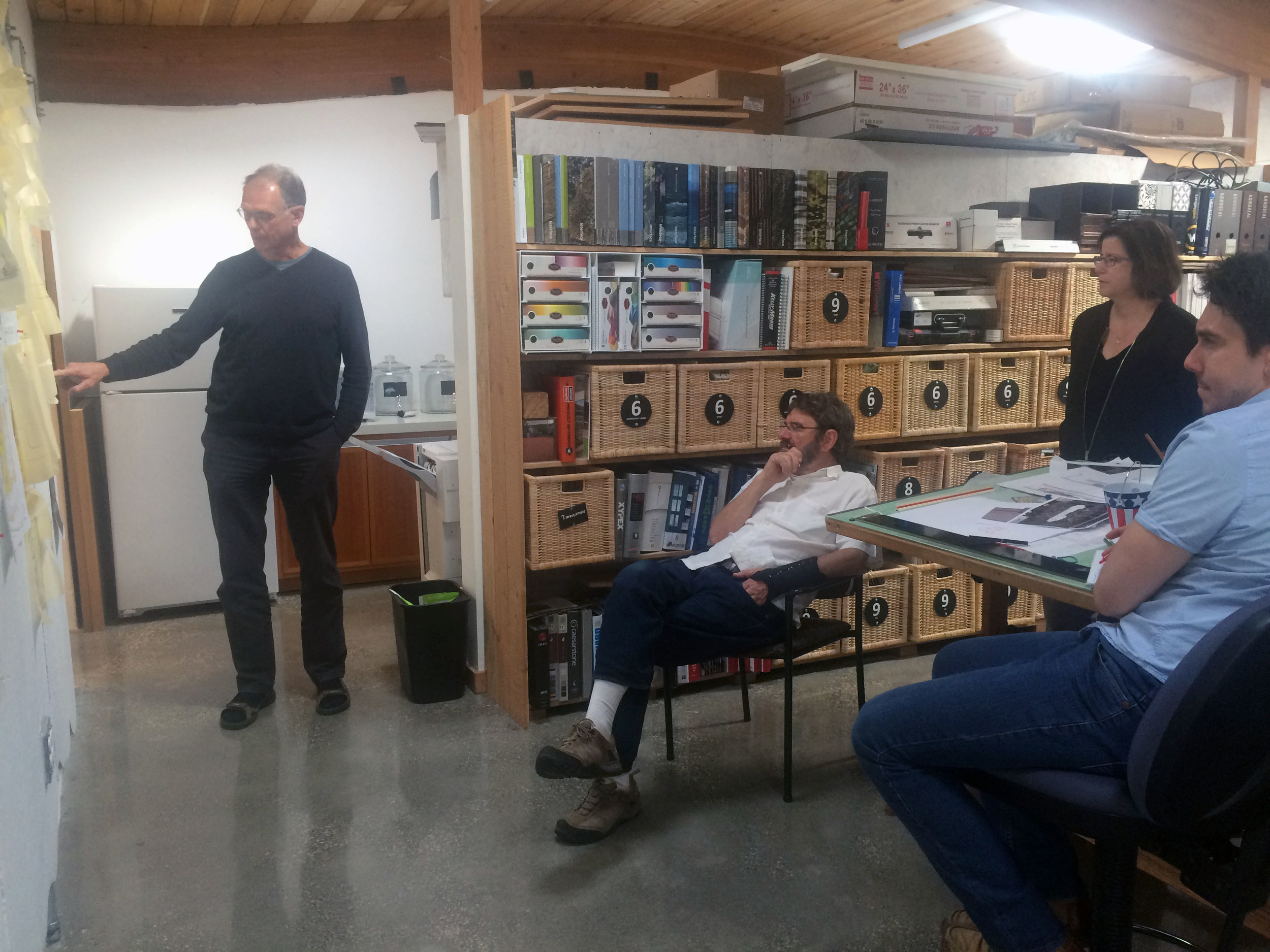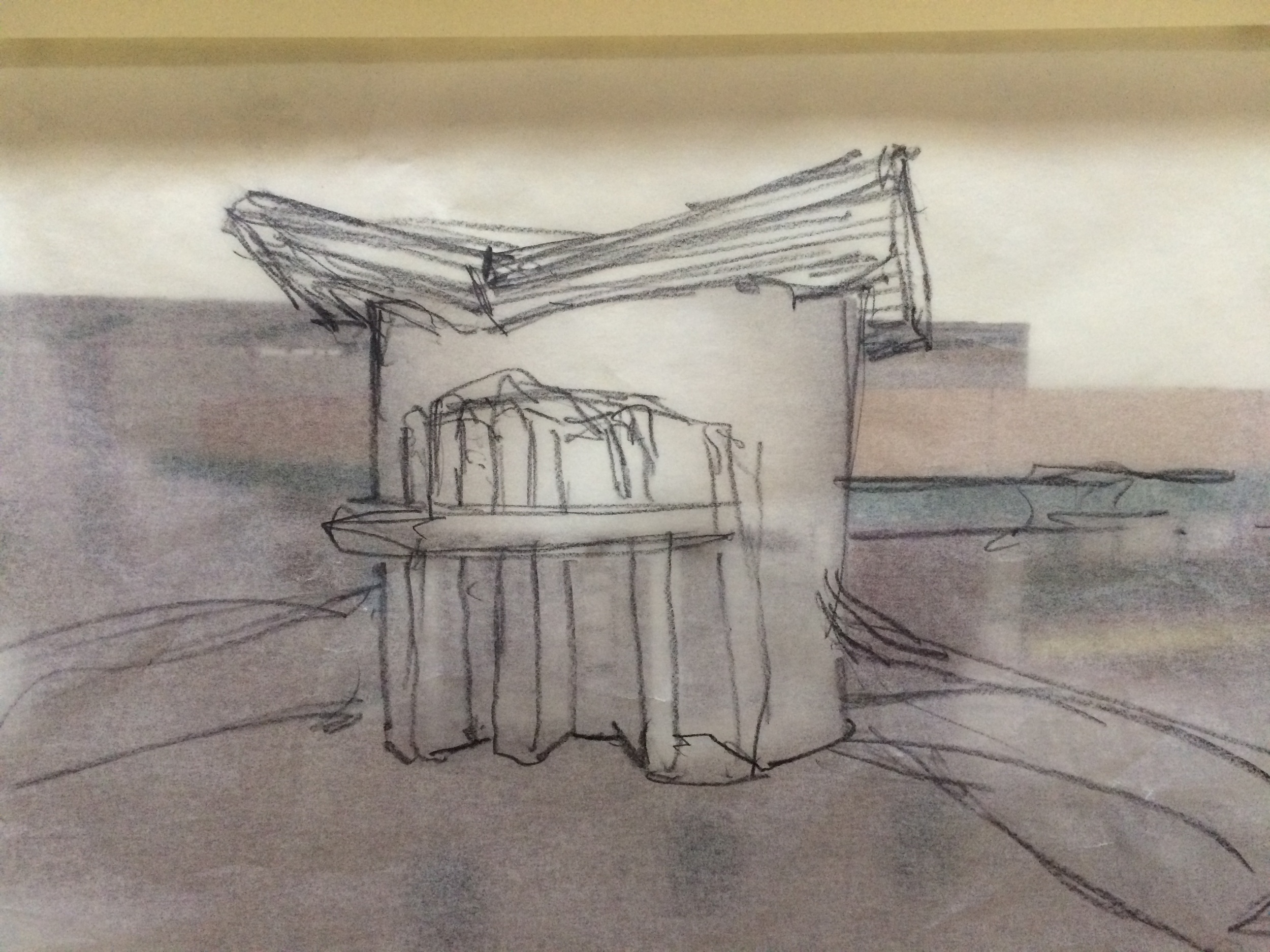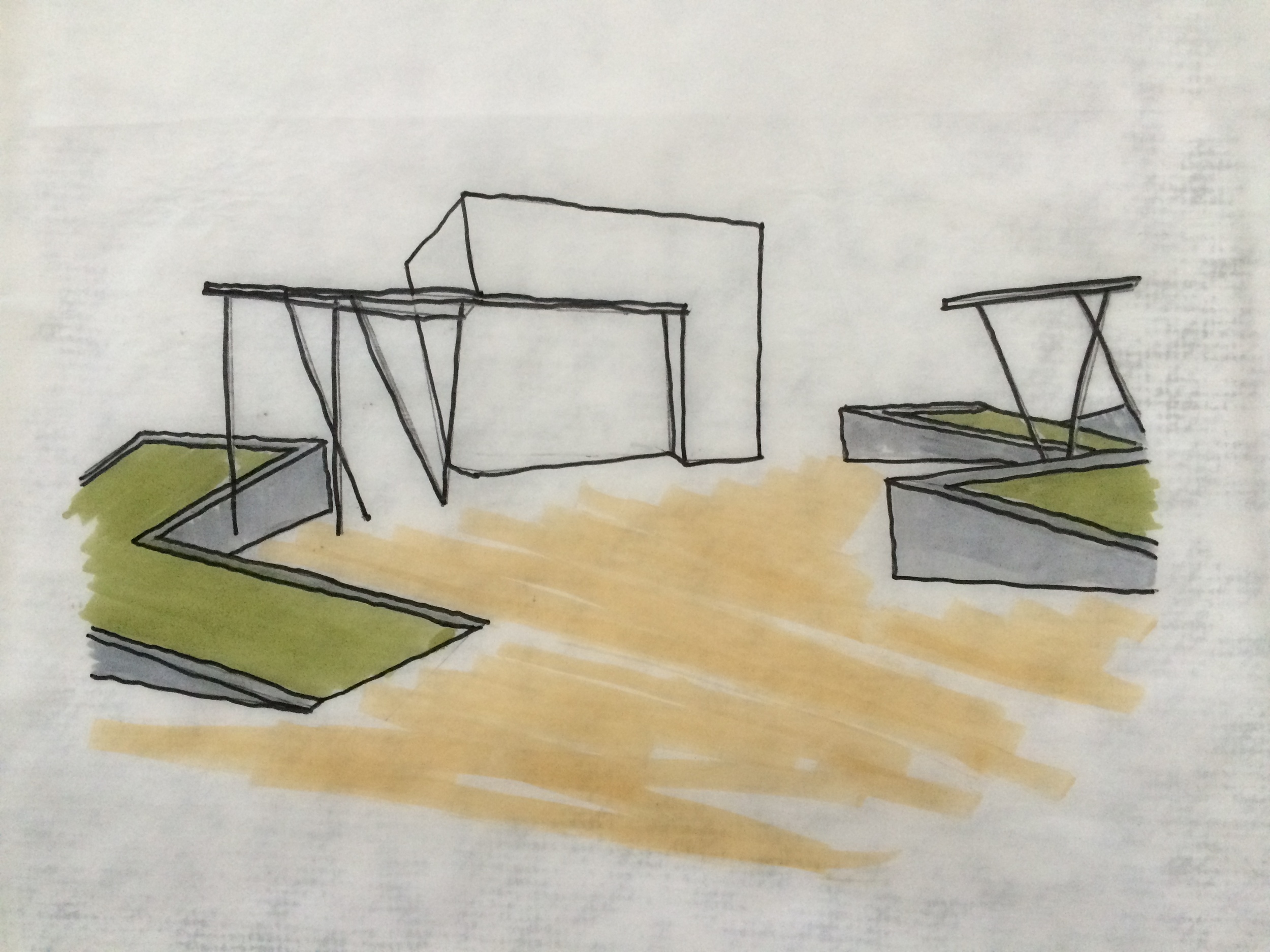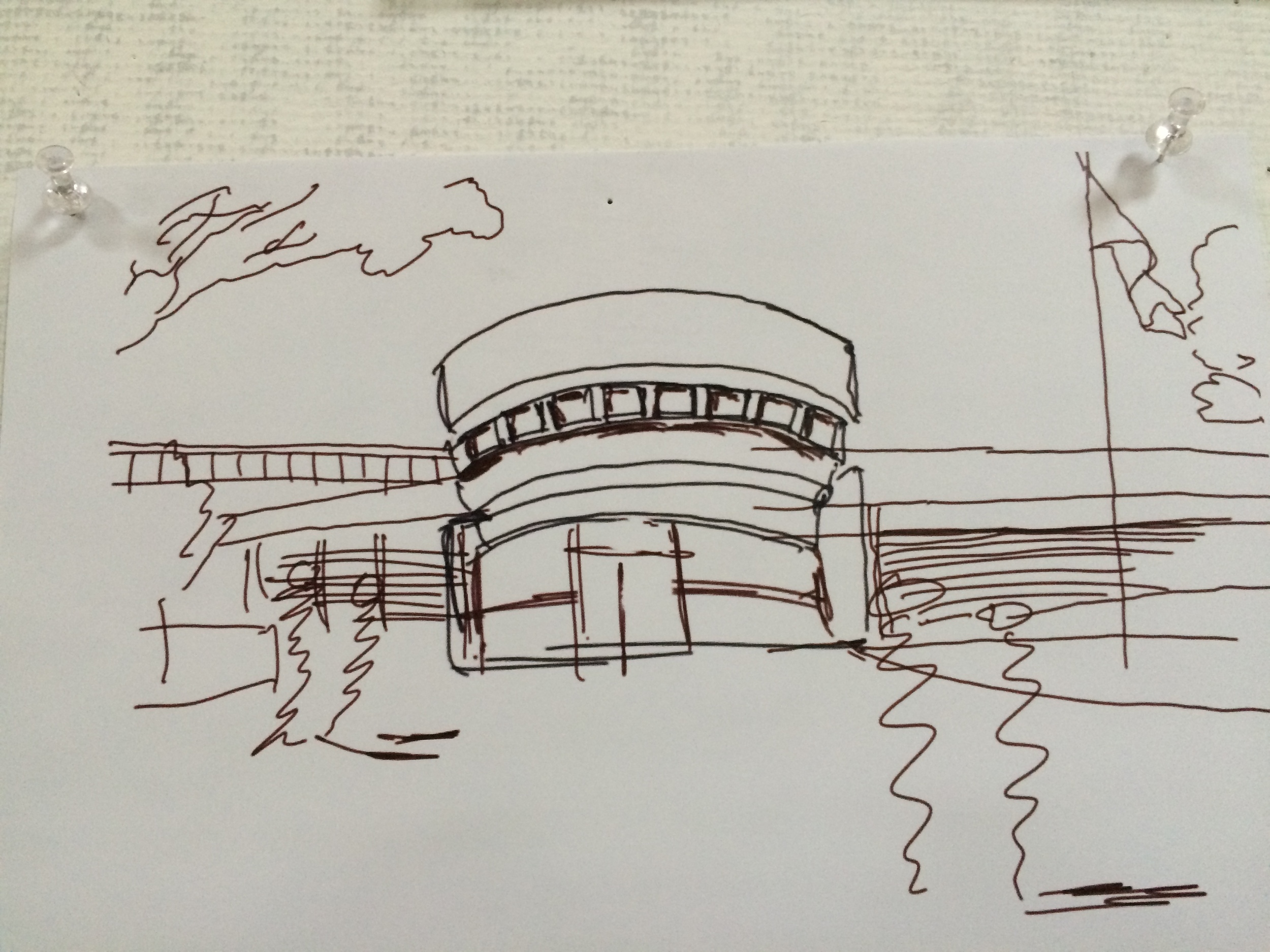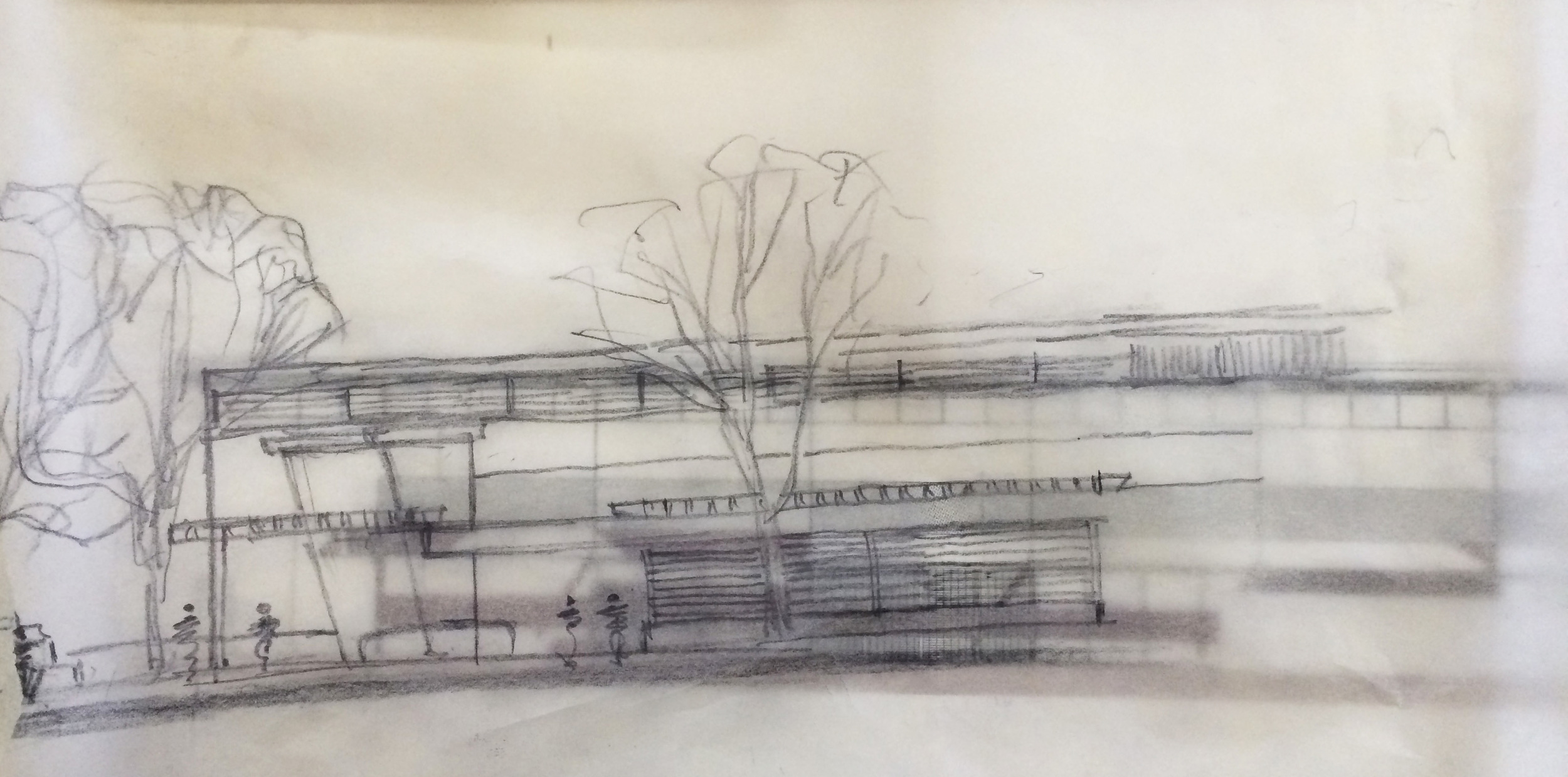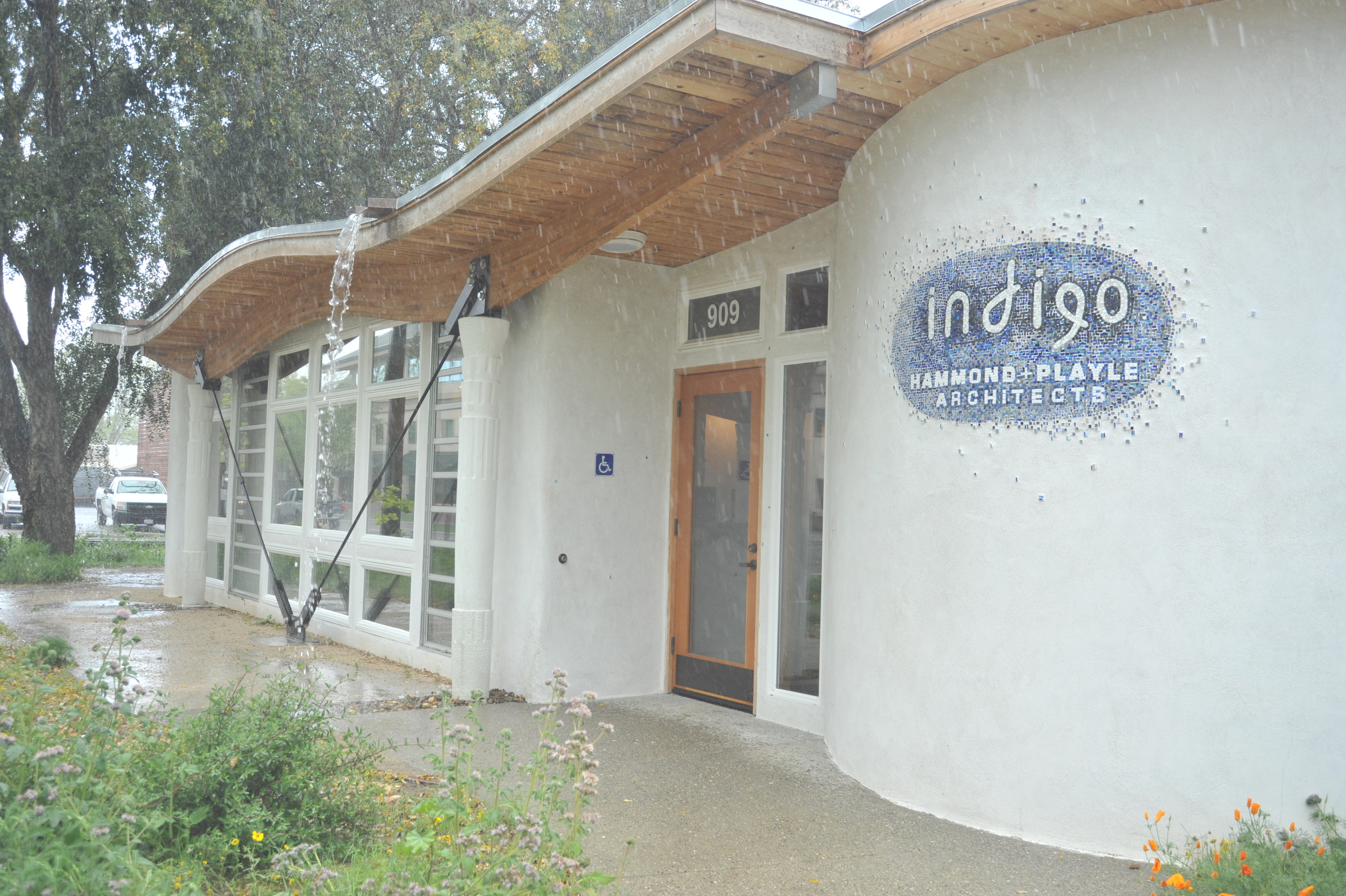Spring Rain // Spring Flowers
By Jonathan Hammond
After reasonably heavy rains this winter, we have an explosion of spring growth in our California native grass and wildflower meadow at our office-studio in Davis. After we completed construction at the end of 2014 we seeded our landscape areas with native plants. They are all exquisitely adapted to hot dry summers with no rainfall. These plants and seeds wait patiently through the summer and as soon as the rain starts in the fall or early winter, seeds sprout and growth begins, slowly at first, but as the temperatures warm a riot of green growth and flowers erupts. First a luxuriant display of orange poppies, followed by waves of daisy-like tidy tips, then a tide of blue lupines, then white, yellow and salmon yarrow. Meanwhile the grasses are pushing growth and starting to push their seed heads aloft. (The grasses include Idaho fescue, Molate fescue, California onion grass and pine blue grass.)
This meadow of natives is not a "mow, blow and go" adapted landscape: it needs the discerning eye of an experienced landscape gardener who can sort out the invasive non-native weeds, foxtails and thistles. Indigo is lucky to have experienced gardener Seth Seibel on staff.
Early landscape plans and gardens were carved out of the wildness of nature, an expression of man's ability to impose order and dominion over the apparent chaos of nature. Now the careful study of ecosystem dynamics has revealed that ecosystems are in fact, not chaotic. While randomness and chance play a role a beautiful and complex order does in fact exist in natural ecosystems and they are far more stable and resilient than man-made landscapes no matter how manicured.
During the years that I lived and taught in Japan, I spent a significant amount of time walking in the countryside of traditional villages, rice paddies, and vegetable plots that have been woven into the natural mountainous landscape of that country. I was deeply impressed with the beauty of these rich landscapes partly man ordered to grow food and partly natural, teeming with snakes, frogs, foxes and deer and trickling brooks tumbling down hillsides and along the tiny roads and paths.
When I traveled to Kyoto and Nara and visited the famous gardens there, I was let down in a strange sort of way. I began to see them as academic and fussy compared to the natural vitality of the mix of natural and manmade landscapes that I had wandered through in the Japanese countryside.
The gravel expanse at the famous Zen temple Ryoan-ji must be carefully raked each day. Even more striking is the care that must be given to moss gardens like those at Kin-Kaku-ji, where the moss growing under a grove of maple trees must be kept free of fallen leaves or the moss will be quickly smothered. An enormous amount of work each day goes into maintaining these beautiful places, which is not to say that mindful work does not have redeeming value, but to my mind, the wild fecundity of nature is even more powerful than the serene beauty and man-made order of the classic Japanese gardens.
Principal Jon Hammond Wins "Solar Pioneer" Award
The American Solar Energy Society announced its Passive Pioneer Awards at a ceremony at the San Francisco City club on July 12th, 2016. The award announcement text is as follows:
The Passive Pioneer Award honors those in the passive solar energy field who provided the theories, research, efforts, new concepts and opportunities for later researchers to follow and to improve upon. The award is presented to a deserving innovator who was involved in the early stages of passive theory, design, application or technology. The 2016 Passive Pioneer Award was presented to Mr. Jonathan Hammond for his early application of passive solar design principles addressing the passive heating and cooling of modern buildings.
Jonathan Hammond played a pivotal role in the emergence of passive solar architecture during the 1970s in California. He built one of the first successful passive solar homes in northern California using a water all retrofit, and the first day lit, naturally heated and cooled office building using a water wall. He worked to improve Harold Hay's "skytherm" concept through the use of a highly insulated roof which served as a reflector of controllable angle. The work with roof ponds later developed into an effective radiant sky/evaporative cooling system.
In 1973 Mr. Hammond co-founded the environmental design firm, Living Systems, which developed impressive and innovative designs to passively heat and cool buildings. He later established Indigo | Hammond + Playle Architects, LLP which the specific purpose of introducing passive principles into the mainstream of civic and institutional architecture. He has continued work on sustainable design throughout his career.
Early in his career, Mr. Hammond explored the nexus between culture and climate by examining how four different cultures adapted to the rigorous New Mexico climate. This work helped inspire him to create an energy conservation building code based on the principles of solar orientation, passive solar heating and cooling, and design with climate. This was put into action as he wrote "A Strategy for Energy Conservation," for the City of Davis, CA. This document resulted in the first climatically adapted building code.
Below are some of Hammond's early passive projects and innovations.



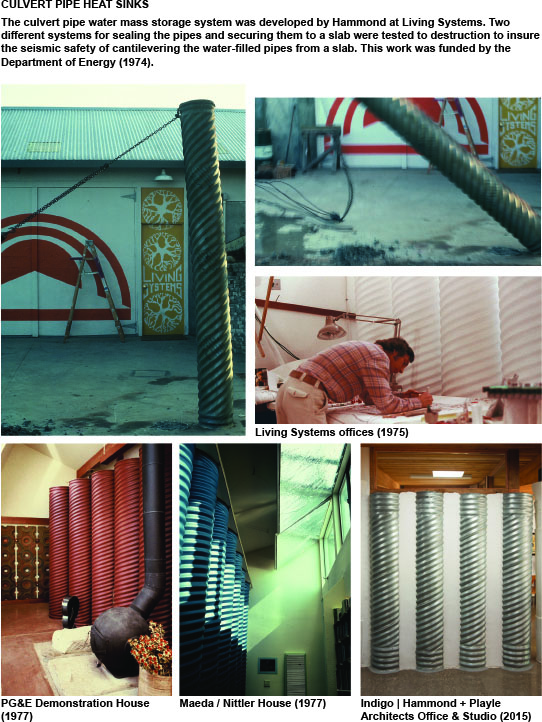
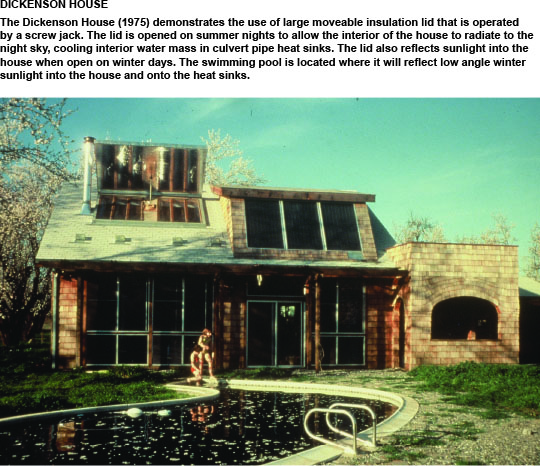
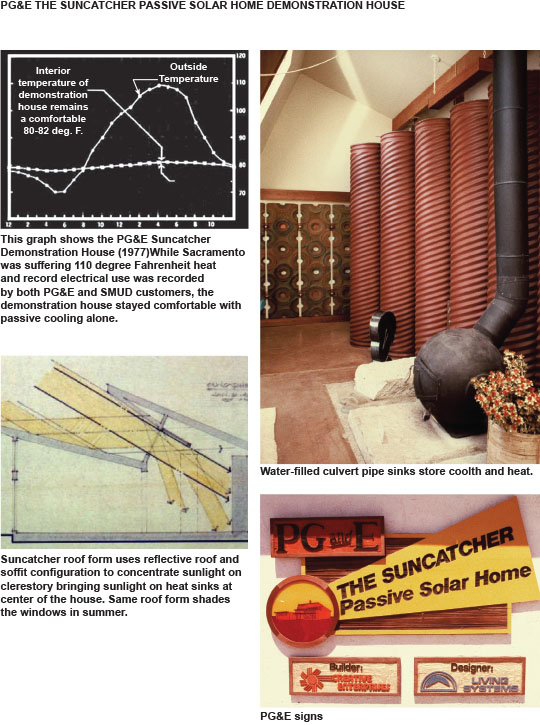
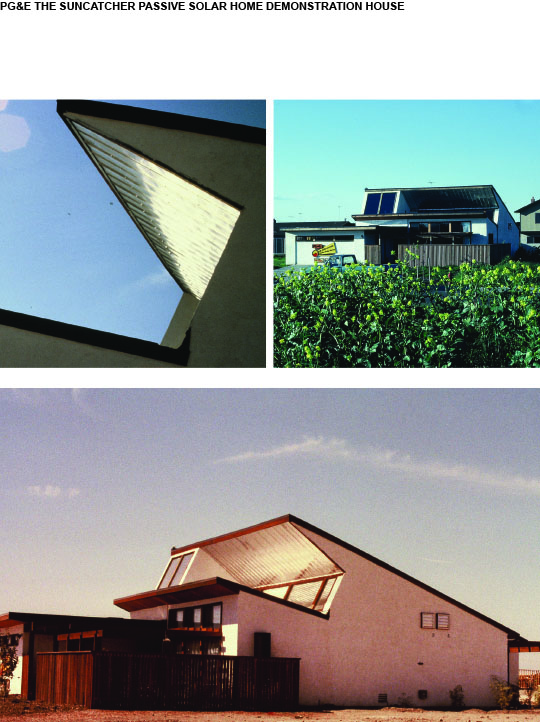


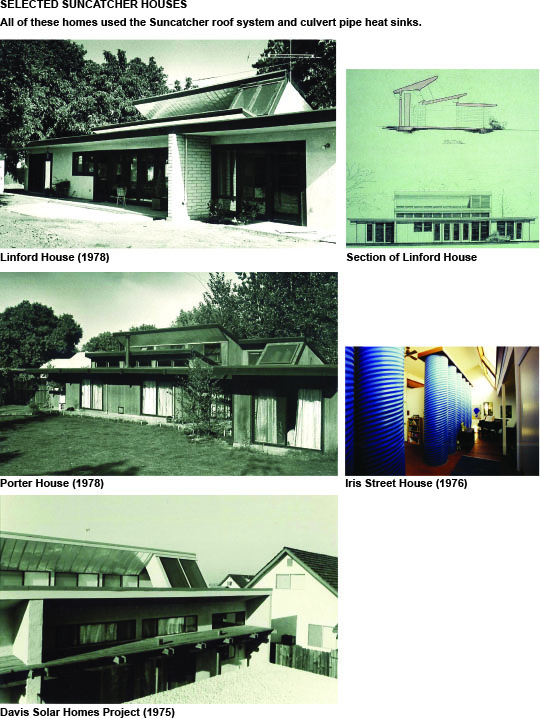
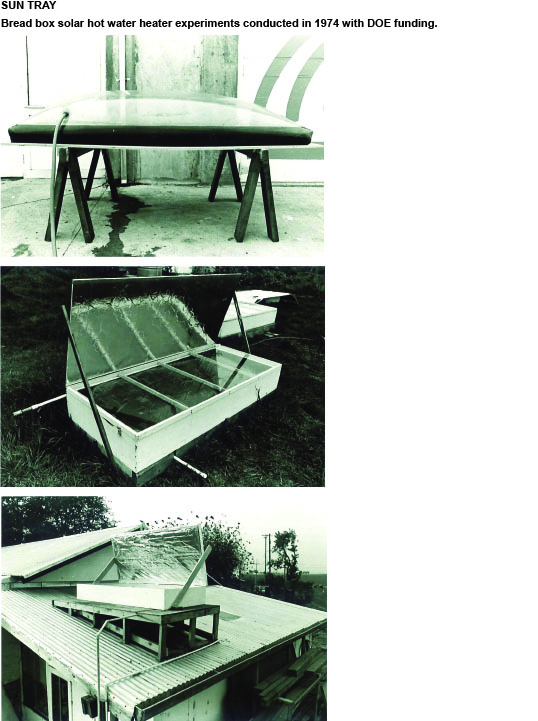
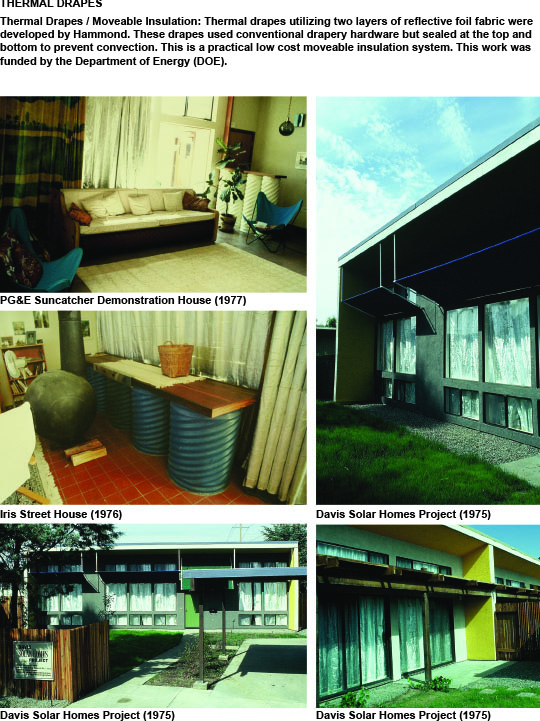
Crit Session
Team Indigo pulls together brain power for ideas on a police department public entrance.
Let It Rain
The last storm brought us a few episodes of short but intense rainfall. We watched from within our studio, mesmerized by the amount of water pouring out from our copper scuppers and into the cobble collection basin below. The water then travels below the cobbles and through a pipe into a bioswale, having the opportunity to soak into the ground along the way. The intent here is to let as much water as possible infiltrate into the ground right here on our site. A carefully designed water collection system not only functions effectively but can be beautiful to see.
Animal Care Conference
Candace and Megumi showcased Indigo's animal shelter project design expertise in the Exhibitor Hall at the 2016 Animal Care Conference. Next to us was the UC Davis Koret Shelter Medicine Program who team with us on our animal shelter projects. We were exposed to a wide range of animal caregivers & industry hot topics, came back with solid contacts and had a good time!
Tour of Village Homes
Megumi joins UC Davis Professor Emeritus, Robert Thayer in providing a for a tour of Village Homes to a Tokyo-based development agency, Aqura. Village Homes, in Davis, California is an ecologically planned 70-acre development built in the mid to late 1970's by Michael and Judy Corbett. The Village consists of various sized single-family homes, apartments, cooperative, offices and a restaurant. Common areas include a community center, pool, orchards and garden plots. The homes are oriented for passive solar design and bioswales to reduce impact on the City's stormwater system.
Notes from Indigo's Principals: Designing with Clients
Jonathan Hammond, Principal
After decades of architectural and artistic practice, I believe that my best designs grow from an understanding and response to my clients’ needs as well as the forces of climate and nature present on a site. I can gain an independent understanding of a given site, its climate, shade trees and orientation. I can predict the angle of the sun on site each hour, each day of the year. The information I must glean from my clients involves their ideas and desires for the building.
I often give clients an assignment: write or draw your personal dreams, goals, criteria, in short your vision and ideas for the design of this building. My goal is for clients to express, directly from their hearts, without worrying about how practical, how silly, how mundane or how crazy their ideas may be. Once clients complete this process, we sit down together to discuss the ideas that have been generated. This way, I can get to work on a project from the position of an informed designer: inspired by my clients’ ideas, ready to create a building that expresses and integrates their vision.
I am fascinated by the challenge of taking disparate visions and molding them into a unified, functional whole. A whole that can be built within a specified budget and expresses what my clients do, how they live, how they learn, work and interact. Adding site considerations to this mix, I can design a building that is so exquisitely adapted to the microclimate that a small photovoltaic array will make it a net zero energy user.
This process requires a bit of effort and commitment from each client, but the result is a genuine creative process, that will, in the end, result in the best building.
sayako dairiki's "Inner landscapes" art exhibit
Sayako Dairiki's opening reception for her "Inner Landscapes" exhibit at the Pence Art Gallery was a success! The exhibit will continue through February 27. Join Sayako for an Artist Talk on Sunday, January 17th from 3-4 PM at the Pence Art Gallery.
Sacramento Business Journal Reports on Indigo Office: "Radical Makeover" of Dairy Queen Building
“What we saw was ... that by putting in efficiency, we could showcase the practices that are the future of building,” said principal Bruce Playle
Read full article by Dennis McCoy No fries with that: Architects do a radical makeover on Dairy Queen
Indigo's Office Featured in Sacramento Bee
Cathie Anderson of the Sacramento Bee profiled Indigo's Office Headquarters, highlighting the regionally climate-adaptive elements of the building and its transformation of the former Dairy Queen building. Read the full article "Davis architects earn awards for innovative HQ"
Video produced by the Sacramento Bee
Indigo Wins AIA Central Valley Design Award
AIA Central Valley has announced the award recipients for its 2015 Design Awards Program, including Indigo, Hammond & Playle Architects, LLP, which won citation award for its new office in downtown Davis. The winning projects were selected by a peer jury from the Board of Directors of AIA Charlotte, North Carolina. Jury Chair, John Paquin, AIA of ZAPATA, Inc., will travel to Sacramento to personally present the awards, and Craig Hodgetts, FAIA of Hodgetts+Fung will serve as Keynote speaker for the event. Winners will receive their awards at a presentation and reception scheduled Friday, October 23rd at 6:00 p.m. in the Friedman Court of the Crocker Art Museum.
The American Institute of Architects started the I look up campaign as the first phase of its public awareness campaign. It's mission is to help people everywhere better understand architecture's contribution to society.
Indigo Wins USGBC Northern California Award for Innovation
Indigo is the recipient of the USGBC Norther California 2015 Award for Innovation for it's new adaptive reuse office building. According to USGBC:
"Existing buildings are by far the biggest polluters in our built world. Through the adoption of innovative green building products and practices in the adaptive reuse and repurposing of a dilapidated existing building near downtown Davis, Indigo Architects took an old Dairy Queen and turned it into an innovative new office and studio workspace." More >











